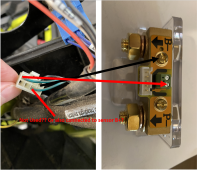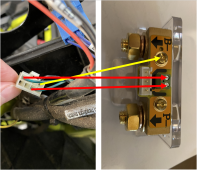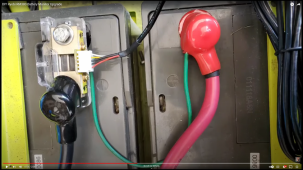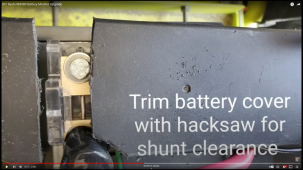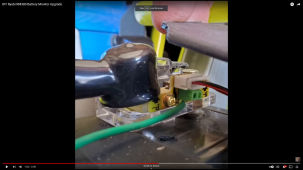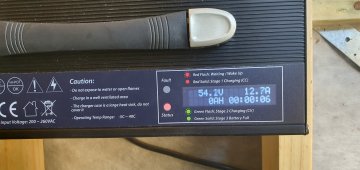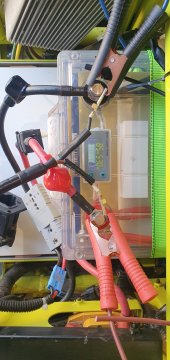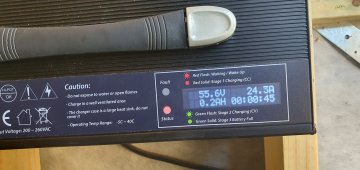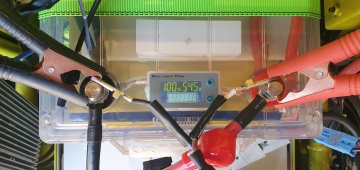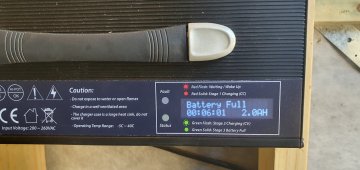james at egreen
New Member
I guess we are all converting our mowers, huh. I bought a new Ryobi Zero Turn 42" mower, just to convert to Lithium Iron Phosphate.
I thought I was surely not the first and did a google search and found this right up. What a help.,
I replaced my 4-75 ah batteries with Weize 12V 100 AH batteries that received an excellent review from Will Prowse. They were an easy drop in replacement. Weize batteries at Amazon

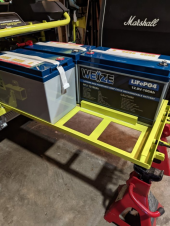
I purchased an AC to DC 48 volt charger from Signature Solar. I will be connecting it to the mower batteries directly, and foregoing the standard charging port that I purchased from Amazon. When my solar charging system is in place in the trailer, I will use a DC to DC charger instead of the AC to DC Charger, I have not found 1 that I like yet.
I am starting an All-Electric, All-Solar Powered lawn service in Chattanooga, TN. I will be charging all of my mowers and tools with 12-100 watt solar panels on the roof of my enclosed trailer, from Amazon as well.
I purchased the inverter and 2 batteries to store the power during the day and recharge the tools overnight from Signature Solar as well.
Here is a rendering of my trailer that is currently being wrapped. Yes, I did change out the photos of shots of my actual equipment. Until I get a sponsor, I am using the Ryobi zero turn and backpack blower, all of my other equipment is Kobalt 80 volt including 2 self propelled mowers, 2 string trimmers, 1 blower, 1 hedge trimmer, 1 pole saw.

So here is the question....
The batteries from my Ryobi Zero Turn (4-75ah SLA batteries) have 2.1 hours on them from cutting my lawn and a few of the neighbors. I should never need them and want to sell them to recoup some of my expenses. What do you think they are worth on Marketplace or eBay?
I suppose the charger will never be needed again either, and I hear that they are in short supply. Any suggestions on a price for that as well?
Thanks for any input anyone has on if and how to sell the batteries and charger!
I thought I was surely not the first and did a google search and found this right up. What a help.,
I replaced my 4-75 ah batteries with Weize 12V 100 AH batteries that received an excellent review from Will Prowse. They were an easy drop in replacement. Weize batteries at Amazon


I purchased an AC to DC 48 volt charger from Signature Solar. I will be connecting it to the mower batteries directly, and foregoing the standard charging port that I purchased from Amazon. When my solar charging system is in place in the trailer, I will use a DC to DC charger instead of the AC to DC Charger, I have not found 1 that I like yet.
I am starting an All-Electric, All-Solar Powered lawn service in Chattanooga, TN. I will be charging all of my mowers and tools with 12-100 watt solar panels on the roof of my enclosed trailer, from Amazon as well.
I purchased the inverter and 2 batteries to store the power during the day and recharge the tools overnight from Signature Solar as well.
Here is a rendering of my trailer that is currently being wrapped. Yes, I did change out the photos of shots of my actual equipment. Until I get a sponsor, I am using the Ryobi zero turn and backpack blower, all of my other equipment is Kobalt 80 volt including 2 self propelled mowers, 2 string trimmers, 1 blower, 1 hedge trimmer, 1 pole saw.

So here is the question....
The batteries from my Ryobi Zero Turn (4-75ah SLA batteries) have 2.1 hours on them from cutting my lawn and a few of the neighbors. I should never need them and want to sell them to recoup some of my expenses. What do you think they are worth on Marketplace or eBay?
I suppose the charger will never be needed again either, and I hear that they are in short supply. Any suggestions on a price for that as well?
Thanks for any input anyone has on if and how to sell the batteries and charger!



